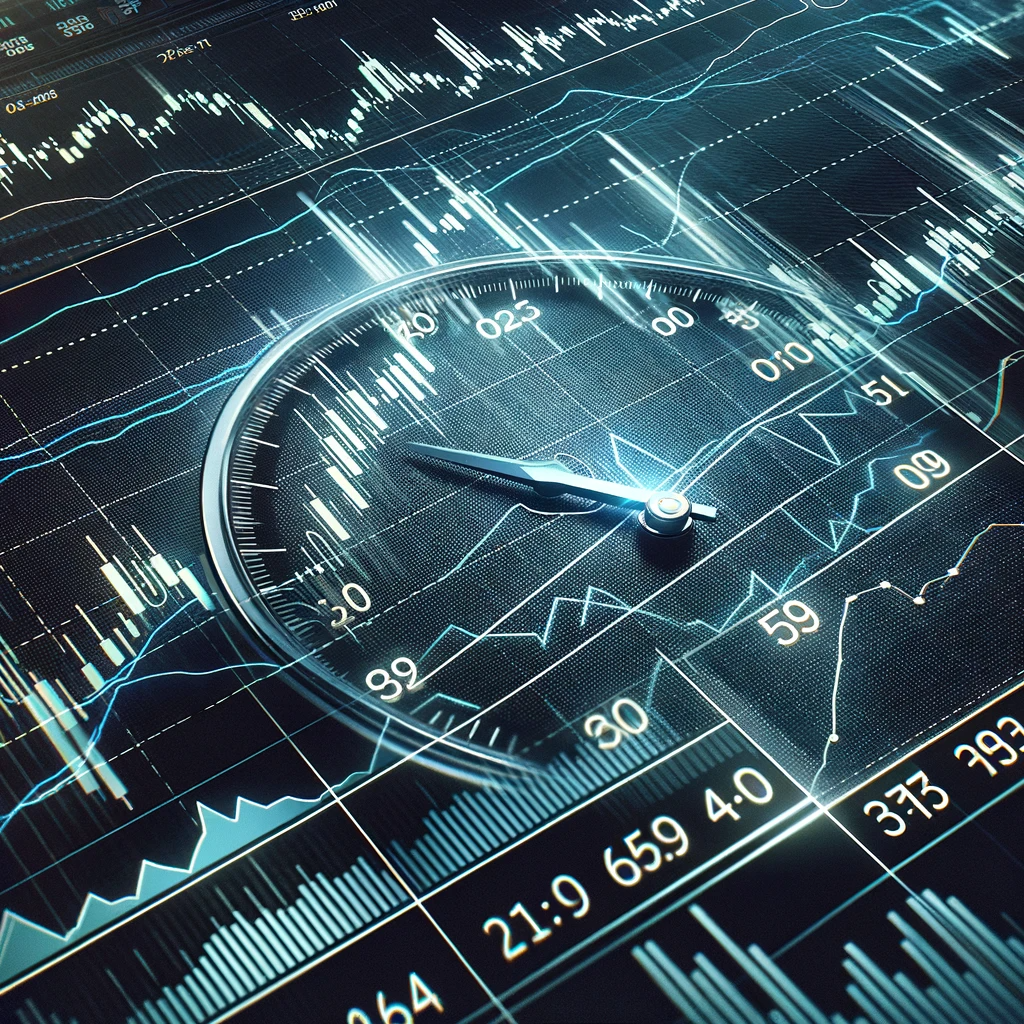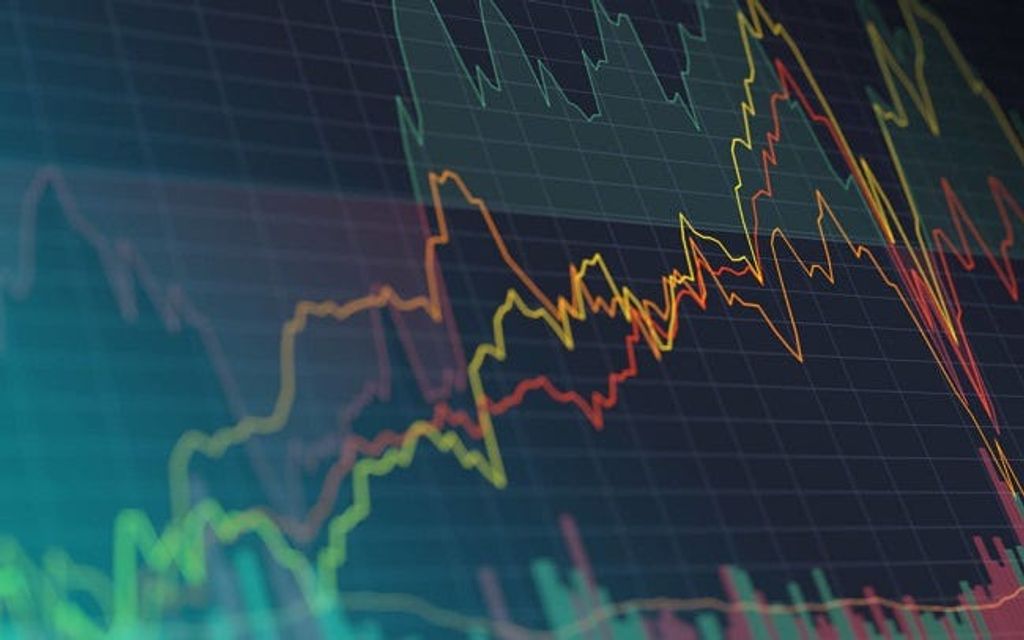Scalping, Day Trading, Swing Trading and Long-Term Forex Trading: Which One is Right for You?

Intro
Are you interested in learning how to trade forex? As one of the largest and most liquid financial markets in the world, forex trading offers a plethora of opportunities for traders of all levels. However, with different trading styles such as scalping, day trading, swing trading, and long-term trading, it can be overwhelming to know which one is right for you. In this blog post, we will discuss the technical and fundamental aspects of forex trading and how to create a forex trading plan that suits your preferred trading style. So, let’s dive in and discover which trading style is best suited for you!
Understanding the Basics of Forex Trading
Forex trading, also known as foreign exchange trading, is the process of buying and selling currencies. It is a decentralized global market where all the world’s currencies trade. The forex market is the largest and most liquid financial market, with an average daily trading volume of around $6.6 trillion. It operates 24 hours a day, five days a week, making it a highly accessible market for traders around the world.
To get started with forex trading, it is important to understand some of the basic concepts. One of the key terms you will come across is “pip,” which stands for percentage in point. A pip is the smallest unit of price movement in a currency pair. Understanding pips is essential for calculating profits and losses in forex trading.
Another important concept to grasp is leverage. Leverage allows traders to control a larger position with a smaller amount of capital. While leverage can amplify profits, it can also magnify losses. Therefore, it is crucial to use leverage responsibly and have a solid risk management strategy in place.
Technical analysis and fundamental analysis are two primary methods used to analyze the forex market. Technical analysis involves studying historical price charts and using various indicators and tools to predict future price movements. On the other hand, fundamental analysis focuses on economic, political, and social factors that can impact currency values. By combining both technical and fundamental analysis, traders can make more informed trading decisions.
There are different trading styles in forex, including swing trading and day trading. Forex swing trading involves holding trades for several days to weeks, taking advantage of price swings and trends. This style of trading requires patience and a longer-term perspective. Forex day trading, on the other hand, involves opening and closing trades within the same day, taking advantage of short-term price fluctuations. Day trading requires quick decision-making skills and the ability to monitor the market closely.
Understanding the basics of forex trading is essential for anyone looking to venture into this exciting market. By familiarizing yourself with key concepts, analyzing the market using technical and fundamental tools, and choosing a trading style that suits your personality and lifestyle, you can start your journey towards becoming a successful forex trader. Remember, practice and continuous learning are crucial to improving your trading skills and achieving consistent profits in the forex market.
Diving Into Technical and Fundamental Analysis
When it comes to trading forex, understanding technical and fundamental analysis is key to making informed trading decisions. These two approaches provide different perspectives on the market and can be used in combination to increase the accuracy of predictions.
Technical analysis involves studying historical price charts and using various indicators and tools to predict future price movements. Traders who rely on technical analysis look for patterns, trends, and support and resistance levels to determine when to enter or exit trades. They believe that historical price movements repeat themselves and that market behavior can be predicted based on past data.
On the other hand, fundamental analysis focuses on economic, political, and social factors that can impact currency values. Traders who use fundamental analysis study economic indicators, such as GDP, inflation rates, and interest rates, as well as geopolitical events and news releases. They believe that these factors influence supply and demand in the market and ultimately determine the value of a currency.
Both technical and fundamental analysis have their strengths and weaknesses. Technical analysis is useful for short-term traders, such as forex day traders, who take advantage of small price fluctuations within a day. These traders often use indicators like moving averages, oscillators, and chart patterns to identify entry and exit points for their trades.
Fundamental analysis, on the other hand, is more suitable for long-term traders, such as forex swing traders, who aim to capture larger price movements over several days to weeks. These traders pay close attention to economic indicators, central bank policies, and geopolitical events that can have a significant impact on currency values.
While technical analysis focuses on price patterns and indicators, fundamental analysis delves into the underlying factors that drive price movements. By combining both approaches, traders can gain a comprehensive understanding of the market and make more accurate predictions.
The Fast-Paced World of Scalping

In the fast-paced world of forex trading, scalping is a trading style that stands out for its quick and frequent trades. Scalping is all about taking advantage of small price movements and profiting from them in a short period of time. This trading strategy requires traders to be highly active and constantly monitoring the market for potential opportunities.
Forex scalpers aim to make small profits on each trade, but they do so by executing a large number of trades throughout the day. These trades typically last only a few seconds to a few minutes, allowing scalpers to quickly move in and out of positions. By capitalizing on small price fluctuations, scalpers can accumulate substantial profits over time.
To successfully scalp in the forex market, traders need to have a high level of discipline and focus. They must be able to quickly analyze charts, identify patterns, and make split-second decisions. Scalpers often rely on technical analysis indicators such as moving averages, Fibonacci retracements, and trendlines to help them identify entry and exit points.
One of the key advantages of scalping is that it allows traders to minimize their exposure to market risk. Since scalpers hold positions for such a short period of time, they are less vulnerable to large market moves that could negatively impact their trades. However, this also means that scalpers need to have a solid risk management strategy in place to protect their capital.
While forex day trading and forex swing trading may require traders to hold positions for longer periods, scalping provides a unique opportunity to generate consistent profits in a short amount of time. However, it is important to note that scalping is not for everyone. It requires a certain level of experience, skill, and temperament. Scalpers need to be able to handle the pressure of making quick decisions and managing multiple trades simultaneously.
The Daily Grind of Day Trading

Day trading in the forex market is not for the faint of heart. It requires dedication, discipline, and the ability to make split-second decisions. As a day trader, you will be constantly in front of your computer, analyzing charts, monitoring price movements, and executing trades. The daily grind of day trading can be intense, but it can also be incredibly rewarding for those who are able to master it.
Forex day trading involves opening and closing trades within the same day to take advantage of short-term price fluctuations. This style of trading requires a high level of focus and the ability to react quickly to market changes. Day traders often rely on technical analysis indicators such as moving averages, oscillators, and chart patterns to help them identify entry and exit points for their trades.
One of the key advantages of day trading is that it allows traders to capitalize on small price movements and accumulate profits over time. Since day traders hold positions for a shorter period, they are less exposed to overnight market risks. This means that they can start each day with a clean slate and a fresh mindset.
However, day trading also comes with its challenges. The fast pace of the market can be overwhelming, and it can be easy to get caught up in the excitement of trading. It is important for day traders to have a solid risk management strategy in place to protect their capital and avoid emotional decision-making.
To succeed as a day trader, you must be willing to put in the time and effort to develop your skills. This includes constantly educating yourself about the market, practicing with demo accounts, and analyzing your trades to learn from both your successes and your failures. It is also important to stay disciplined and stick to your trading plan, even when the market is moving against you.
The Middle Ground: Swing Trading

Swing trading is often considered the middle ground between day trading and long-term forex trading. It is a trading style that focuses on capturing medium-term price movements, typically ranging from a few days to several weeks. If you find yourself attracted to the idea of actively trading the forex market but prefer a slightly slower pace compared to day trading, then swing trading might be the perfect fit for you.
Forex swing trading allows traders to take advantage of price swings and trends that occur within larger market movements. Traders who engage in swing trading aim to identify key support and resistance levels, trend lines, and chart patterns to enter trades with the expectation of capturing a portion of a price movement.
One of the key advantages of swing trading is that it allows traders to potentially benefit from larger price movements compared to day trading. By holding positions for a longer period, swing traders can ride out short-term fluctuations and take advantage of trend continuation. This style of trading requires a certain level of patience, as it may take some time for trades to reach their full potential.
To be successful at forex swing trading, traders need to have a solid understanding of technical analysis. They must be able to identify key levels on price charts and determine when to enter or exit a trade based on the signals provided by technical indicators. Some popular technical indicators used in swing trading include moving averages, MACD, and RSI.
Risk management is also crucial in swing trading, as holding positions for a longer period increases exposure to potential market fluctuations. Traders must carefully manage their stop-loss levels and position sizes to protect their capital.
Swing trading can be a rewarding trading style for those who have the patience and discipline to follow a longer-term approach. It allows traders to potentially capture larger price movements while avoiding the intense pace of day trading. If you prefer a more relaxed and less time-consuming trading style, then swing trading might be the right fit for you.
The Patient Approach: Long-Term Forex Trading

If you prefer a more laid-back and patient approach to forex trading, then long-term trading might be the perfect fit for you. Unlike scalping, day trading, and swing trading, which focus on capturing short-term price movements, long-term trading is all about riding out larger market trends and holding positions for weeks, months, or even years.
Long-term trading allows you to take advantage of major market movements and profit from significant price changes. Instead of constantly monitoring the market and executing frequent trades, you can take a more relaxed approach and focus on capturing the overall trend. This style of trading requires a certain level of patience and discipline, as it may take time for your trades to reach their full potential.
One of the key advantages of long-term trading is that it reduces the impact of short-term market fluctuations. By holding positions for a longer period, you are less affected by day-to-day price movements and market noise. This can help you avoid making impulsive decisions based on short-term market volatility and focus on the bigger picture.
To be successful at long-term trading, it is important to have a solid understanding of fundamental analysis. You need to stay informed about economic indicators, central bank policies, and geopolitical events that can have a long-lasting impact on currency values. By analyzing these factors, you can identify currencies that have strong long-term potential and make informed trading decisions.
Risk management is also crucial in long-term trading. Since you will be holding positions for a longer period, you need to carefully manage your stop-loss levels and position sizes to protect your capital. It is important to set realistic profit targets and avoid being overly greedy, as long-term trades require a different mindset compared to short-term trading.
Long-term trading can be a rewarding and profitable trading style for those who have the patience and discipline to follow a more laid-back approach. It allows you to avoid the stress and intensity of frequent trading and focus on capturing larger market trends. If you prefer a more patient and strategic approach to forex trading, then long-term trading might be the right fit for you.
Choosing the Right Trading Strategy for You
Choosing the right trading strategy is a crucial decision that every forex trader needs to make. Each trading style – scalping, day trading, swing trading, and long-term trading – has its own advantages and disadvantages. To find the right strategy for you, it’s important to consider your personality, lifestyle, and trading goals.
If you thrive in a fast-paced environment and have excellent decision-making skills, scalping or day trading might be the right fit for you. Scalping allows you to take advantage of small price movements and make quick profits. It requires intense focus and the ability to analyze charts and indicators in real-time. On the other hand, day trading involves opening and closing trades within the same day. It requires you to be constantly in front of your computer, monitoring price movements, and executing trades. Day trading can be exciting and rewarding, but it also requires discipline and the ability to manage risk effectively.
If you prefer a slightly slower pace and have a more relaxed approach to trading, swing trading might be the perfect fit for you. Swing trading involves holding trades for several days to weeks, taking advantage of price swings and trends. It requires patience and a longer-term perspective. Swing traders analyze charts and indicators to identify entry and exit points. This style of trading allows you to potentially benefit from larger price movements and avoid the intense pressure of day trading.
If you have a patient and strategic mindset, long-term trading might be the right choice for you. Long-term traders focus on capturing major market trends and holding positions for weeks, months, or even years. This style of trading allows you to avoid the stress of frequent trading and take advantage of significant price changes. Long-term traders rely heavily on fundamental analysis, analyzing economic indicators and geopolitical events to make informed trading decisions.
When choosing a trading strategy, it’s important to consider your personality, lifestyle, and trading goals. Ask yourself what type of trading environment suits you best – a fast-paced and intense one or a more relaxed and patient one. Consider how much time you can dedicate to trading and what level of risk you are comfortable with. By taking these factors into account, you can find the trading strategy that aligns with your strengths and goals.
Remember, there is no one-size-fits-all approach to trading. It’s essential to experiment with different strategies and find the one that works best for you. Keep in mind that trading is a continuous learning process, and it’s important to adapt and refine your strategy as you gain experience.


